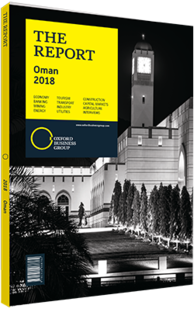Grid improvements to save fuel and increase energy security in Oman
Oman’s electricity networks underwent a major renewal in 2017, with the aim of strengthening transmission infrastructure, enhancing reliability and achieving fuel savings. Interconnectivity is playing an increasingly prominent role in shaping procurement strategies and guiding industry development.
UAE Interconnect Project
At a regional level, the phenomenon of interconnectivity is not new to Oman. A 220-KV interconnection between Oman’s Main Interconnected System and Abu Dhabi’s power system at Mahadha has been commercially operational since 2012. The UAE interconnect provides Oman with access to the power systems of the other five member states of the GCC Interconnection Authority (GCCIA). Benefits of this include potential contingency resources of up to 800 MW in times of emergency, and the opportunity to trade electricity and coordinate planning and operating reserves. It has provided emergency reserves on a number of occasions, and in 2016 Oman Power and Water Procurement Company (OPWP) completed a power exchange transaction with Abu Dhabi Transco, importing 200 MW during the peak summer months of May and June and exporting 200 MW in July and August. The exchange demonstrated the potential of energy trading for net fuel savings at no cost.
OPWP is now working with Oman Electricity Transmission Company (OETC), the Authority for Electricity Regulation and the GCCIA to finalise the access conditions that will enable scheduled trading arrangements. The option presents OPWP with development alternatives to local generation. By 2021, the UAE is expected to have a nuclear plant contributing 25% of the power requirements in the country. If surplus energy from the UAE can be imported at competitive rates, OPWP’s local generation procurement may be called into question.
North-South Interconnection
Domestically, OPWP, OETC and Petroleum Development Oman (PDO) were working together under a memorandum of understanding in 2017 in order to evaluate the costs and benefits of significantly expanding the capacity of interconnection with a north-south interconnector project – a proposed 400-KV transmission link from Nizwa to Duqm, PDO’s concession areas and the Dhofar power system. The PDO power system at Nizwa is already connected with the Dhofar power system between Thumrait and Harweel to support reserve sharing in contingency scenarios.
As outlined in OPWP’s Seven-Year Statement, benefits of the proposed north-south interconnection include increased grid security and fuel savings due to improved dispatch coordination and trading among power systems. Duqm will also gain access to power generation resources in the Main Interconnected System, which will become increasingly important for grid stability and security as the area develops into a major industrial and economic centre. A technical and economic study is under way that will recommend project timing, the best route and savings projections to the government. For greater linkage between the country’s energy networks, the OETC is also implementing an ambitious plan to strengthen Oman’s transmission infrastructure. It recently contracted Siemens to supply four shunt reactors for installation at 400-KV substations in the town of Izki and the city of Ibri. Scheduled for 2018, the reactors are vital for protection from voltage surges on long transmission lines, improving grid stability and increasing efficiency.
Funding
To fund the $2bn capital expenditure programme to revamp Oman’s distribution and transmission network, Nama Holding – which holds the government’s stake in nine electricity firms – has embarked on a long-term borrowing and privatisation plan for subsidiary companies.
In late 2017 OETC was considering issuing US dollar-denominated Islamic bonds, and two subsidiaries of Nama Holding – Majan Electricity Co and Muscat Electricity Distribution Company – were in the process of raising syndicated loans of $165m and $200m.
You have reached the limit of premium articles you can view for free.
Choose from the options below to purchase print or digital editions of our Reports. You can also purchase a website subscription giving you unlimited access to all of our Reports online for 12 months.
If you have already purchased this Report or have a website subscription, please login to continue.

